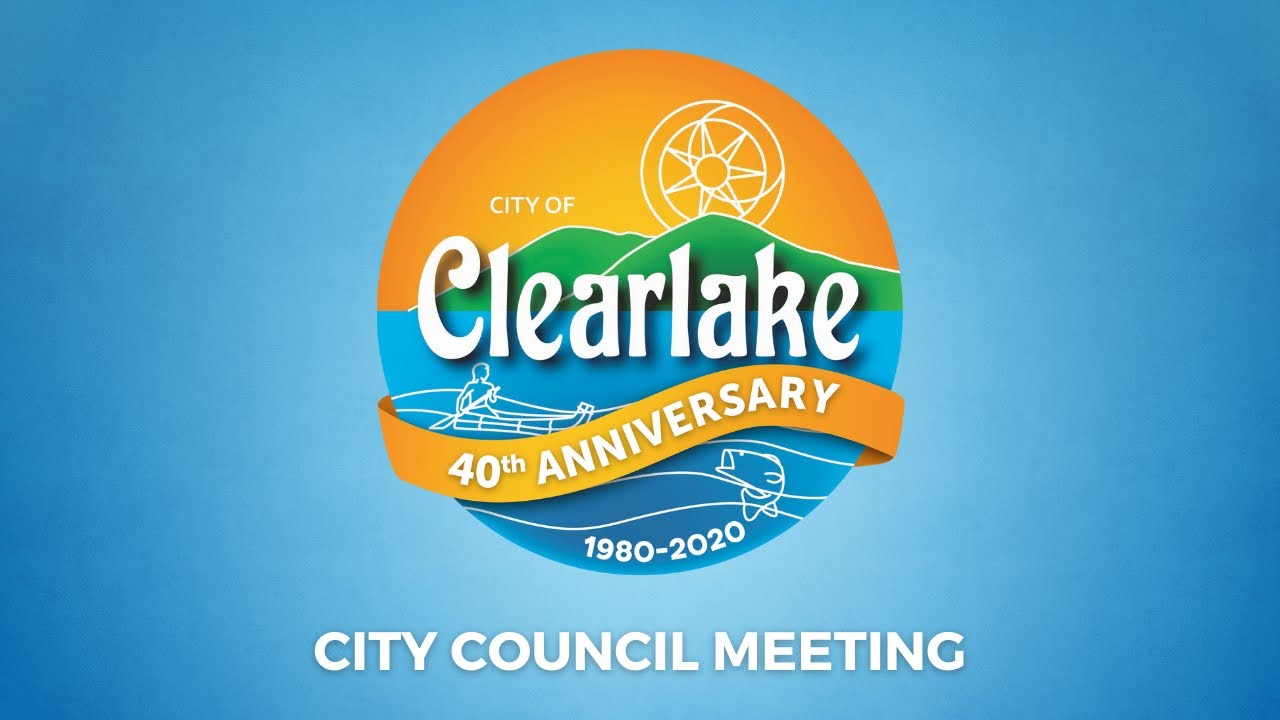With Lake County and the rest of California in the midst of a worsening drought, representatives of two water companies operating in the city of Clearlake have offered some insight into their operations and how they are continuing to ensure there is adequate water supply for their customers.
The Clearlake city administration invited the three companies that serve the city — Golden State Water Co., Konocti County Water District and Highlands Mutual Water Co. — to speak about the situation at the Clearlake City Council’s July 7 meeting.
Golden State and Konocti County Water each sent a representative to give the council an update.
The update begins at the 35 minute mark in the meeting video above.
“We are still in the midst of a drought,” City Manager Alan Flora told the council, explaining that Gov. Gavin Newsom had handed down state executive orders to address the drought conditions.
Those executive orders have a variety of impacts on water systems throughout the state, Flora said.
Unlike the city of Lakeport, which operates its own water and sewer system, Flora said Clearlake doesn’t control any utilities.
He said the water companies were invited to come and discuss their drought mitigation measures at the request of Mayor Dirk Slooten.
In response, Keith Ahart, superintendent for Golden State Water, and Frank Costner, Konocti County Water’s general manager, came to the meeting to give the council an update.
Golden State sees big conservation effort
Ahart said Golden State hit stage two of its contingency plan when the state’s executive order came out for mandatory stage two rationing. That applies to all customers in all service areas, not just Clearlake. In all, Golden State serves more than one million people in 80 communities across the state, according to its website.
That plan calls for a conservation target of 20%. Ahart said they’ve been monitoring production on a weekly basis to compare it to 2020. They’ve found that it’s down 37% to 43%, and he thanked customers for making that effort to conserve.
“Thank you for doing what you’re doing. Keep doing it,” he said.
Golden State is considered an urban water supplier, which is any service or territory with more than 3,000 connections, he said. While it doesn’t have that many in Clearlake, it has more than that across its larger service territory.
Ahart said the overarching goal of hitting stage two is to make customers think about how they’re using water and reduce use where possible. “Be smart about it and think about it.”
During the update, in answer to a question from Councilman David Claffey about supply, Ahart said the Lake would have to go to -10 feet Rumsey — the special measure used specifically for Clear Lake — for Golden State’s deepest wells to go dry.
“As far as supply goes, we’re safe,” said Ahart.
He said the state already has curtailed prospective water rights, so the company has to buy 100% of its water through its contract from Yolo County Flood Control and Water Conservation District, which owns the water rights to Clear Lake. If the state starts to curtail senior water rights, it may have an impact and require more conservation.
“Our customers conserve at a level that far exceeds what they're looking for at the state level,” Ahart said.
Claffey asked about the impacts of the low water level on treatment. Ahart explained that water quality suffers as the lake gets lower because it needs more treatment.
Councilman Russ Perdock asked if the increase in treatment costs, coupled with a reduction in water use, could trigger an additional rate hike.
Ahart said it’s possible. He said a water rate adjustment mechanism, or RAM, is a temporary surcharge given to companies to make up for the additional cost of an event — in this case, the drought.
Councilman Russ Cremer asked if the RAM is driven by the California Public Utilities Commission. Ahart said yes — everything in water is.
Konocti County Water District makes system improvements
Costner said Konocti County Water District serves Clearlake’s Avenues area, east of Highway 53.
In 2014, during the last drought, the district adopted a water conservation plan that it didn’t activate then.
However, in the summer of 2021, the district’s board of directors assessed the situation — including how low the lake level was then — and decided to activate the water conservation plan, Costner said.
He said they went to their plan’s level three, which requires a 35% mandatory reduction with no surcharges, limits or tiered rates.
“We were just wanting people to conserve water so the treatment plant could keep up with the treatment capacity,” Costner said, explaining that as the drought worsens, the treatment plant is impacted.
Last year, Konocti County Water’s customers conserved 14% compared to 2020 usage numbers, he said.
“This year the lake is even lower” — a foot lower — than it was in 2021. Costner said it’s the lowest it’s been in the 34 years he’s worked for the company.
There is one upside — the cooler weather this year has helped a lot with raw water quality. Costner said the lake quality also is a lot better.
In 2021, Costner said the district spent $85,000 above its budget on labor and chemical costs for treatment.
To avoid putting surcharges on customers, Costner said the district deferred maintenance on some equipment.
They also applied for a grant and received $657,000 to put new media in a filter and to install a booster pump at the raw water pump station to increase flow on a smaller line that goes further out into the lake.
That booster pump should be installed in the next month, and Costner said that will hopefully mean better water quality.
“We don’t know if this drought is going to end this winter,” said Costner, questioning what if it lasts another 10 years.
Usually after a drought the area gets major rainfall and flooding. “Until that time, we’re in pretty bad shape in Clear Lake as far as the raw water quality,” Costner said.
He said there is a lot of water in Clear Lake and everyone can lower their intakes. However, “Treating the water is very expensive.”
Along with that, Costner said equipment and supplies — chemicals, PVC pipe, gasoline and everything in general — has increased in cost a quarter to half to double the previous cost, “If you can even find it.”
Costner said Konocti County Water District is working on $15 million in infrastructure projects, 100% of which is covered by grants.
Those projects include the new intake line and new filter, a new tank at the treatment plant and a new raw water pump station. Costner said the district has been proactive and working on upgrades since 2014. The major projects are expected to be done by 2023.
Costner said the district also is working on interties with Highlands Water and is consolidating with the Cache Creek Mobile Home Park’s treatment plant, which was burned down in last year’s Cache fire.
That project includes putting an 8-inch water main down Dam Road with water hydrants. Costner said when it’s done all of Dam Road will have a new water line.
Costner said the company’s website features its water conservation plan which is “very robust.” Many water agencies around the lake have adopted their plan, he added.
Cremer asked if district water users are penalized for not reducing use enough. Costner said no, they’re not penalizing them for not making the 35% conservation number.
He said they are concerned about the high users, and while they could implement conservation pricing, which would increase the cost of water across the board.
However, at the same time, that drops the district’s income, which in turn impacts its projects. “We can only defer maintenance for so long.”
Costner said the 35% target set last year may have been a little aggressive, but they didn’t know how bad it was going to be.











